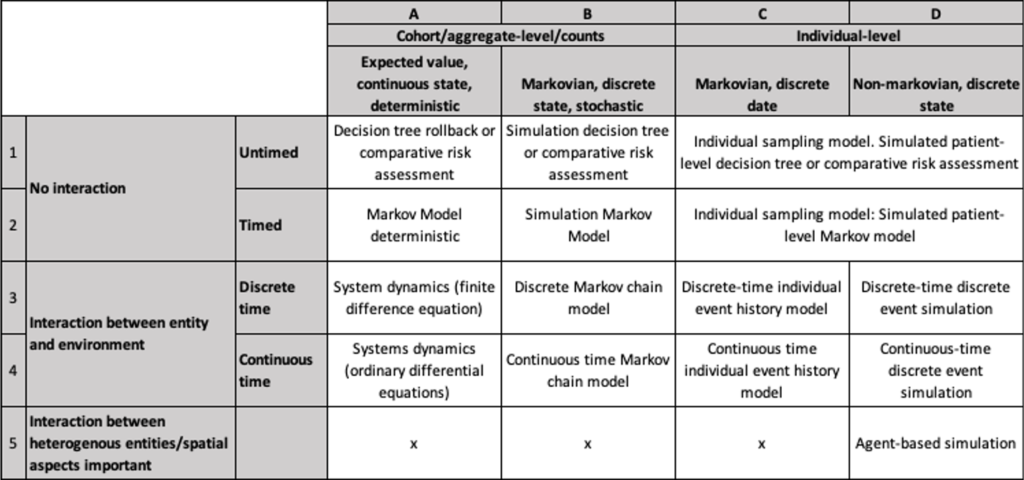The answer depends on a number of factors. These include: (i) are there interactions between the entity and the environment, (ii) does the model have a time component, (iii) is the model a cohort or individual level model, (iv) is the model continuous or discrete states, and (v) is it Markovian or not. The Brennan taxonomy of model structures helps provide an overview of which model type to pick based on these considerations.

The table above is from Breeze et al. (2023), but adapted from Brennan et al. 2006 and Briggs et al. 2016.
To provide some examples of what Breeze et al. (2023) terms complex systems models:
Computable General Equilibrium (CGE) models have been used to model choices that have cross sector impacts that influence the indicators of the national economy. Partial differential equation models can be used to describe the dynamics of infectious disease transmission. Both CGE and Partial differential equation models have key similarities to system dynamics and describe aggregated populations. In infectious disease modeling, the term individual-based model is often used for ABMs [agent-based models]. IBMs have long been used to include spatial and social population structure relevant to transmission and have been commonly used in modeling COVID-19 and impacting policy decisions. IBMs allow easy inclusion of behavioral change to project its effects on transmission dynamics